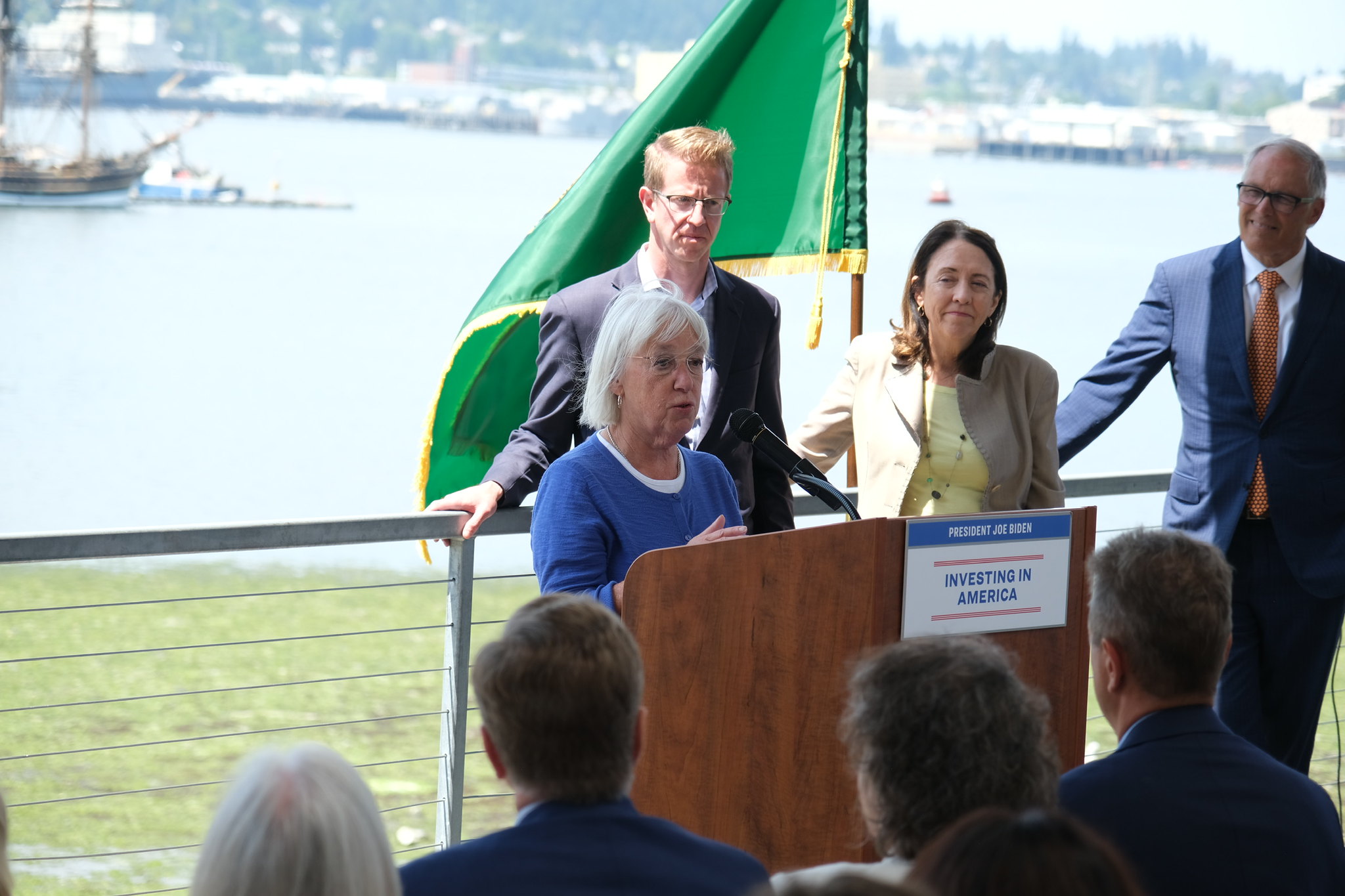Funds will refurbish passenger amenities for ferries currently serving Fauntleroy, Vashon, Southworth, Mukilteo, Clinton, Anacortes, & the San Juan Islands
Washington DC – Today, U.S. Senators Patty Murray (D-WA), Chair of the Senate Appropriations Committee, and Maria Cantwell (D-WA), Chair of the Senate Committee on Commerce, Science, and Transportation, announced that Washington State Ferries (WSF) has received $4.8 million in federal funding to refurbish passenger areas on six aging boats in its ferry fleet.
The grant will pay for upgrades on all six of WSF’s Issaquah Class Vessels, originally constructed between 1979 and 1982 and currently serve travelers in Fauntleroy, Vashon, Southworth, Mukilteo, Clinton, Anacortes, and the San Juan Islands. Funds came from the Federal Transit Administration’s (FTA) 2023 Ferry Programs Grants. The Washington State Department of Transportation is providing an additional $960,000 for the project.
“Here in Washington state, ferries are really important to our daily lives and commutes—so we need the federal government to make a serious investment in this mode of transportation,” dijo el senador Murray. “These critical refurbishments made possible with the funding we’re announcing today will allow these vessels to serve passengers more comfortably and for years to come. As Chair of the Appropriations Committee, I’m working hard to secure additional federal resources for our ferries, and to make sure that our nation’s largest ferry fleet—right here in Washington state—can continue to serve our communities well.”
“Our ferry system is a critical part of our transportation network and ridership is growing. With this money, Washington State Ferries will extend the useful life of six vessels by five to ten years, which will help improve service reliability throughout the ferry system,” dijo el senador Cantwell.
This project will extend the useful life of the vessels and improve passenger amenities, allowing for more space between passengers in high-occupancy areas, and making cleaning easier for WSF staff. The benefits will be primarily felt by the increasing number of walk-on riders in the nation’s largest ferry system.
Each of the six ships can carry 90-124 vehicles and 1,200 passengers per trip. The vessels receiving upgrades are:
- MV Issaquah (1979)
- MV Kittitas (1980): Serving Fauntleroy/Southworth/Vashon
- MV Kitsap (1980) : Serving Mukilteo/Clinton
- MV Cathlamet (1981): Serving Fauntleroy/Southworth/Vashon
- MV Chelan (1981) : Serving Anacortes/San Juan Islands
- MV Sealth (1982)
In FY2022, only 43% of the 21 WSF vessels met the target for State of Good Repair. Additionally, the accumulating maintenance backlog has resulted in pervasive service disruptions. From July 2019 to June 2023, each of the six vessels was out of operation in shipyards for an average of 3.12 months each year. Without refurbishment, vessels will continue to deteriorate, and service disruptions will become even more commonplace. The project will extend the useful life of these aging vessels – which comprise 28.5% of the entire WSF fleet – for another five to 10 years.
By the end of 2025, these six ships will have a combined preservation backlog of over $88 million, with only $28.9 million available for preservation. With such severe fiscal constraints, preservation funding has been necessarily directed toward only the most urgent needs to keep vessels operational, in the absence of significant funding allocated for passenger amenities.
In January, Senador Murray y Senador Cantwell announced that Washington State Ferries would receive three grants from the Federal Transit Administration (FTA) totaling $11.6 million, including a grant to electrify the Mukilteo-Clinton route. Senators Murray and Cantwell played an instrumental role in securing $25 million to replace the 60-year-old Lummi Island ferry with a state-of-the-art electric hybrid vessel through the Rebuilding American Infrastructure with Sustainability and Equity (RAISE) grant program first established by Senator Murray.
Senator Murray has long fought to increase funding for in our nation’s ferry systems and this year, as Chair of the Senate Appropriations Committee, she secured $20 million for the Passenger Ferry Grant Program—a $5 million increase over last year’s funding level—in the draft Transportation, Housing and Urban Development funding bill for Fiscal Year 2024 that overwhelmingly pasó el senado in November. In last year’s spending package, Senator Murray successfully fought to increase investments for the Passenger Ferry Grant Program, as well as a minimum of $5 million set-aside for low or zero-emission ferries. Senator Murray also helped secure record funding for ferries in the Ley de infraestructura bipartidista she helped pass as Assistant Majority Leader; the legislation included $2.3 billion for ferry boats and terminal infrastructure, including $250 million over five years for low or zero emission ferries and more than $17 billion for port and waterway infrastructure.
As Chair of the Senate Committee on Commerce, Science, and Transportation, Senator Cantwell has consistently championed investments in the State of Washington’s transportation systems and has helped secure federal funding for important infrastructure and transit expansion projects throughout the state. In August, Sen. Cantwell Anunciado a $44.6 million grant to help convert three Washington State Ferries to hybrid-electric propulsion systems, along with a $100 million contract with shipbuilder Vigor.
Senators Murray and Cantwell have long been strong supporters of robust increases to competitive transit grant programs such as the Programa de subvenciones para inversiones de capital, el Low or No Emission (Low-No) Grant Program, the Bus and Bus Facilities Grant Program, and the Passenger Ferry Grant Program.
###


